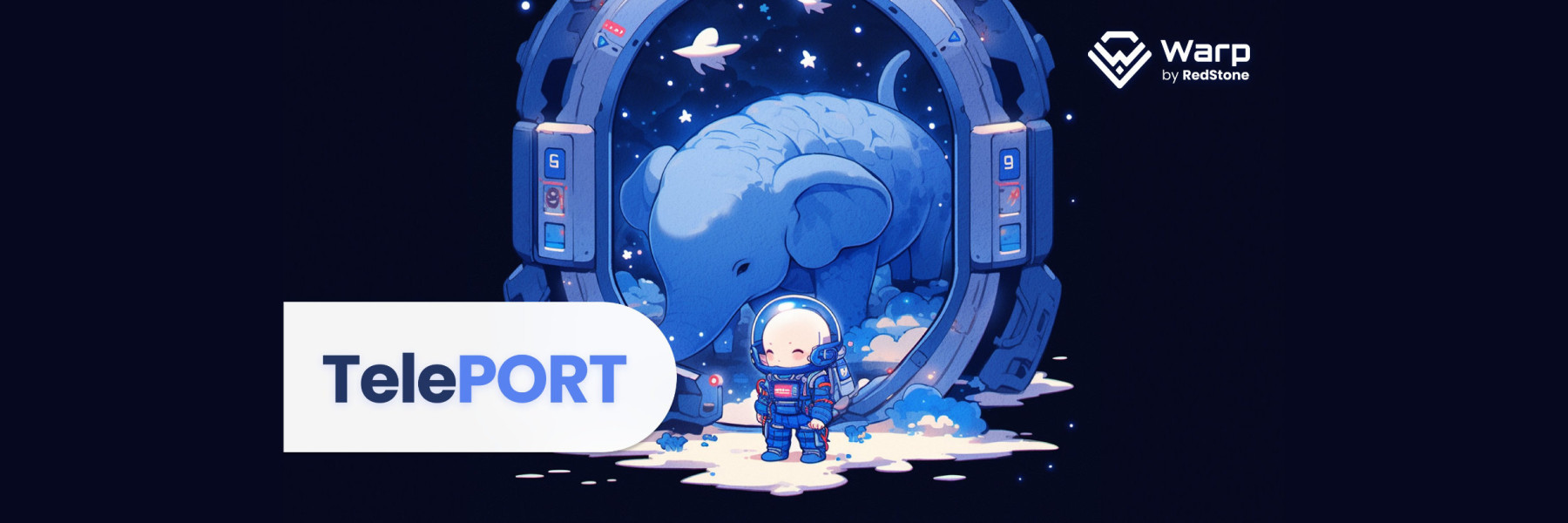
telePORT - A Digital Asset Exchange and Bridge for Arweave to EVM and Other Chains
Warp Contracts recently proposed a new solution to a longstanding problem in the Arweave network: a lack of an effective digital asset exchange platform. The proposal comes in the form of telePORT, a non-custodial and trustless cross-chain assets transfer protocol.
We'll take a look at the current issue, as well as the proposed solution, while exploring the major risks associated with creating it.
Let's dive in!
The Current Arweave Conundrum
Despite its robust ability to collect and store valuable content, Arweave has struggled to establish a fully functional trading infrastructure. At present, it holds around 1 million tokenised assets, an impressive number but merely the tip of the iceberg. The primary issue lies in liquidity: AR, Arweave's native token, cannot be directly used in smart contracts, and there are no tokenised stablecoins available. Moreover, there are currently few financial tools such as decentralised exchanges (DEXs) and lending protocols to support market growth and facilitate price discovery.
Warp Contracts' telePORT aims to address this challenge by leveraging liquidity from external networks to trade content available on Arweave.
telePORT: A New Era of Cross-Chain Transfers
telePORT would effectively act as type of bridge between ecosystems - Arweave and others. But certain issues relating to bridges must be overcome, otherwise telePORT - just like many other bridges created on other chains - could be subject to hacks and exploits. This is why Warp Contracts is proposing a slightly different approach to the functionality of telePORT.
The aim of telePORT is to provide seamless, secure, and decentralised cross-chain transfers. Unlike typical bridges connecting two networks, telePORT could handle connections between Arweave and any of the monitored chains simultaneously. The scalability of this new standard relies on chain monitoring implementations on the asset seller's side and could be extended using Oracle services. That is where RedStone Oracles (RedStone is the creator of Warp Contracts) could come into play.
Current bridges often require locking assets on one side to receive mirrored assets on the other, creating a large repository of locked funds and potential security vulnerabilities. In contrast, telePORT doesn't hold assets for longer than the transfer execution. Even during this period, assets could be put in a segregated self-custodial contract fully owned by users participating in the trade. This approach significantly reduces the risks associated with bridge hacks, a major issue in the DeFi sector.
If you want to get more technical, read more on the Warp Contracts Medium blog here.
A Closer Look at telePORT's Functioning
Transferring assets via telePORT consists of four steps: Price, Offer, Reply, and Transfer (PORT).
In step one, the seller announces the selling price of the asset and locks it for a specific period. The buyer then locks the corresponding amount in a smart contract, with the seller account as the only recipient. The seller must then reply to the offer, confirming that the funds are properly locked - with their address as the only recipient. Finally, the buyer triggers the asset transfer by revealing a secret (aka a hash to execute the trade/transfer).
Using Warp contracts, assets can be temporarily locked at a stated price using the hashed secret. The assets are unlocked when the secret is revealed or after a set lock period. This process can be undertaken either in a single contract for cost-effectiveness or in dedicated smart contracts for added security.
But creating telePORT is not an easy task, as bugs in the code could be catastrophic, as many other bridges would tell tales of.
DeFi Bridge Hacks: A Critical Challenge
Security issues have always plagued the DeFi space. According to an article by Ana Paula Pereira on Cointelegraph, hackers stole over $2.5 billion through vulnerabilities on cross-chain bridges between 2020 and 2022.
Limechain’s article, “What Went Wrong: Biggest Blockchain Bridge Hacks”, mentions several instances of high-profile bridge hacks, including the Ronin, Binance, Wormhole, Nomad, and Harmony bridges. These attacks exploited a range of vulnerabilities, from social engineering tactics to technical vulnerabilities like proof verifier bugs and insecure code functions.
In the case of the Ronin hack, social engineering was used to steal private keys, enabling hackers to steal 173.6K ETH and 25.5M USDC tokens, amounting to more than $600 million. Similarly, the Binance bridge hack exploited a proof verifier bug, leading to the loss of 2 million BNB tokens, equivalent to $570M.
Wormhole, a bridge between Ethereum and Solana, saw an attacker bypassing signature verification and minting 120K ETH, amounting to $236M. The Nomad bridge was exploited due to a trusted root exploit, leading to a loss of over $190 million in WETH and USDC. Lastly, Harmony’s Horizon bridge was compromised due to the theft of two private keys, resulting in a $100M loss.
In light of these hacks, Warp Contracts’ telePORT proposes a safer and more secure solution for digital asset exchanges via bridges.
